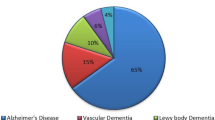Abstract
During brain aging and progression of Alzheimer’s disease, the levels of Aβ and proinflammatory cytokines accumulate very early in the pathogenic process prior to any major degenerative changes. Accumulation of these molecules may impair with signal transduction pathways critical for neuronal health. Neurotrophin signaling is a critical mechanism involved in synaptic plasticity, learning and memory and neuronal health. We have recently shown that exposure to low levels of Aβ impairs BDNF trkB signal transduction, suppressing the Ras/ERK, and the PI3-K/Akt pathways but not the PLCγ pathway. As a result, downstream regulation of gene expression and neuronal viability are impaired. Recently, we have found that at least three agents – Aβ, TNFα, Il-1β – suppress TrkB signaling and act via a common and novel mechanism. These factors all regulate the docking proteins (e.g., IRS and Shc) that link the activated Trk receptor to downstream effectors. While this is a novel mechanism underlying regulation of Trk signaling, such a mechanism has been identified for the insulin/IGF-1 receptor in the presence of proinflammatory cytokines and is one of the mechanisms for insulin/IGF-resistance, which is a key risk factor for type II diabetes (1). We suggest that accumulation of AB and proinflammatory cytokines during aging generates in the brain a “neurotrophin resistance” state that places the brain at risk for cognitive decline and dementia.
Similar content being viewed by others
References
Y. Zick (2001) ArticleTitleInsulin resistance: A phosphorylation-based uncoupling of insulin signaling Trends Cell. Biol. 11 437–441 Occurrence Handle11684411
X. D. Cai T. E. Golde S. G. Younkin (1993) ArticleTitleRelease of excess amyloid beta protein from a mutant amyloid beta protein precursor Science 259 514–516 Occurrence Handle8424174
P. F. Chapman et al. (1999) ArticleTitleImpaired synaptic plasticity and learning in aged amyloid precursor protein transgenic mice Nat. Neurosci. 2 271–276 Occurrence Handle10195221
Hsia, A. Y., et al. 1999. Plaque-independent disruption of neural circuits in Alzheimer’s disease mouse models. Proc. Natl. Acad. Sci. USA:3228–3233.
Selkoe D. J. 1999. Biology of β-amyloid precursor protein and the mechanism of Alzheimer disease. Pages 293–310, in Terry, R. D., Bick, K. L., Sisodia, S. S. (eds.), Alzheimer Disease 2nd edition, Philadelphia: Lippincott Williams & Wilkins.
P. M. Moran et al. (1995) ArticleTitleAge-related learning deficits in transgenic mice expressing the 751-amino acid isoform of human beta-amyloid precursor protein Proc. Natl. Acad. Sci. USA 92 5341–5345 Occurrence Handle7777509
M. E. Calhoun et al. (1998) ArticleTitleNeuron loss in APP transgenic mice Nature 395 755–756 Occurrence Handle10.1038/27351 Occurrence Handle9796810
B. A. Yankner (1996) ArticleTitleMechanisms of neuronal degeneration in Alzheimer’s disease Neuron 16 921–932 Occurrence Handle10.1016/S0896-6273(00)80115-4 Occurrence Handle8630250
D. Morgan et al. (2000) ArticleTitleA beta peptide vaccination prevents memory loss in an animal model of Alzheimer’s disease Nature 408 982–985 Occurrence Handle10.1038/35050116
J. Naslund et al. (2000) ArticleTitleCorrelation between elevated levels of amyloid beta-peptide in the brain and cognitive decline JAMA 283 1571–1577 Occurrence Handle10.1001/jama.283.12.1571 Occurrence Handle10735393
J. C. Morris et al. (1996) ArticleTitleCerebral amyloid deposition and diffuse plaques in “normal” aging: Evidence for presymptomatic and very mild Alzheimer’s disease Neurology 46 707–719 Occurrence Handle8618671
L. F. Lue et al. (1999) ArticleTitleSoluble amyloid beta peptide concentration as a predictor of synaptic change in Alzheimer’s disease Am. J. Pathol. 155 853–862 Occurrence Handle10487842
M. M. Poo (2001) ArticleTitleNeurotrophins as synaptic modulators Nat. Rev. Neurosci. 2 IssueID1 24–32 Occurrence Handle10.1038/35049004 Occurrence Handle11253356
M. Sato K. Suzuki S. Nakanishi (2001) ArticleTitleNMDA receptor stimulation and brain-derived neurotrophic factor upregulate homer 1a mRNA via the mitogen-activated protein kinase cascade in cultured cerebellar granule cells J. Neurosci. 21 IssueID11 3797–3805 Occurrence Handle11356868
N. Tartaglia et al. (2001) ArticleTitleProtein synthesis-dependent and independent regulation of hippocampal synapses by brain-derived neurotrophic factor J. Biol. Chem. 276 IssueID40 37585–37593 Occurrence Handle10.1074/jbc.M101683200 Occurrence Handle11483592
J. Alder et al. (2003) ArticleTitleBrain-derived neurotrophic factor-induced gene expression reveals novel actions of VGF in hippocampal synaptic plasticity J. Neurosci. 23 IssueID34 10800–10808 Occurrence Handle14645472
O. Steward E. M. Schuman (2001) ArticleTitleProtein synthesis at synaptic sites on dendrites Annu. Rev. Neurosci. 24 299–325 Occurrence Handle10.1146/annurev.neuro.24.1.299 Occurrence Handle11283313
L. Tong et al. (2004) ArticleTitleBeta-amyloid peptide at sublethal concentrations downregulates brain-derived neurotrophic factor functions in cultured cortical neurons J. Neurosci. 24 IssueID30 6799–6809 Occurrence Handle10.1523/JNEUROSCI.5463-03.2004 Occurrence Handle15282285
D. E. Moller (2000) ArticleTitlePotential role of TNF-alpha in the pathogenesis of insulin resistance and type 2 diabetes Trends Endocrinol. Metab. 11 IssueID6 212–217 Occurrence Handle10.1016/S1043-2760(00)00272-1 Occurrence Handle10878750
H. D. Venters R. Dantzer K. W. Kelley (2000) ArticleTitleA new concept in neurodegeneration: TNFalpha is a silencer of survival signals Trends Neurosci. 23 IssueID4 175–180 Occurrence Handle10.1016/S0166-2236(99)01533-7 Occurrence Handle10717677
Author information
Authors and Affiliations
Corresponding author
Rights and permissions
About this article
Cite this article
Cotman, C.W. The Role of Neurotrophins in Brain Aging: A Perspective in Honor of Regino Perez-Polo. Neurochem Res 30, 877–881 (2005). https://doi.org/10.1007/s11064-005-6960-y
Accepted:
Issue Date:
DOI: https://doi.org/10.1007/s11064-005-6960-y




